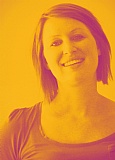Introduction
Spoken by over 23 million people as a first language—primarily in the Netherlands and Belgium—and by millions more as a second language, Dutch encompasses a rich cultural and historical heritage. Within the realm of language learning, acquiring the skill to count in Dutch serves as a fundamental step. This proficiency not only enriches the learner's linguistic arsenal but also facilitates a deeper engagement with Dutch culture and society.
The objective of this article is to provide a detailed guide that simplifies the process of learning to count to 100 in Dutch.
By offering a comparison with English numbers, highlighting similarities and differences, and breaking down the structure and rules governing Dutch numerals, this guide aims to make the learning process as seamless as possible. Whether you're a language enthusiast, a student preparing for an exam, or simply someone looking to expand their linguistic capabilities, this article is crafted to meet your needs, guiding you through the essentials of counting in Dutch with clarity and precision.
The Basics of Dutch Numbers (1-20)
The foundation of numerical literacy in any language begins with mastering the basic numbers. In Dutch, as in English, numbers from 1 to 20 serve as the essential building blocks for constructing more complex numerical expressions. This section aims to introduce these foundational numerals, providing a clear pathway for learners to understand and utilize them effectively.
Dutch numbers from 1 to 20 are unique in their formation and pronunciation, yet they share similarities with their English counterparts that can facilitate learning. For instance, the number 'one' in Dutch is 'één', pronounced similarly to its English equivalent but with a slightly extended vowel sound. Such similarities offer a bridge for English speakers venturing into the realm of Dutch numerals.
Here's a list of the Dutch numbers from zero to twenty, along with their English equivalents:
- 0 - nul - zero
- 1 - één - one
- 2 - twee - two
- 3 - drie - three
- 4 - vier - four
- 5 - vijf - five
- 6 - zes - six
- 7 - zeven - seven
- 8 - acht - eight
- 9 - negen - nine
- 10 - tien - ten
- 11 - elf - eleven
- 12 - twaalf - twelve
- 13 - dertien - thirteen
- 14 - veertien - fourteen
- 15 - vijftien - fifteen
- 16 - zestien - sixteen
- 17 - zeventien - seventeen
- 18 - achttien - eighteen
- 19 - negentien - nineteen
- 20 - twintig - twenty
These numbers form the foundation for counting in Dutch and are essential for basic communication in the language.
It is important to note the pronunciation nuances in Dutch, particularly the 'ij' and 'ui' sounds, which do not have direct equivalents in English. These sounds are prevalent in numbers such as 'drie' (three) and 'twee' (two), requiring attentive listening and practice to master.
Understanding these basic numerals is crucial for advancing in Dutch language proficiency. These numbers not only form the basis for daily communication—such as exchanging phone numbers, discussing prices, or specifying quantities—but also lay the groundwork for learning higher numerical constructs.
As learners become comfortable with these foundational numbers, they are encouraged to practice by incorporating them into simple sentences and questions. For example, asking the time, "Hoe laat is het?" (What time is it?) and responding with the hour, "Het is één uur" (It is one o'clock), can serve as practical applications of these numbers.
In summary, the numbers 1 to 20 in Dutch are indispensable tools for anyone learning the language. By familiarizing oneself with these basic numerals, learners can confidently navigate a variety of everyday situations, setting a solid foundation for further exploration of the Dutch language.
Expanding Your Knowledge: Numbers 21-100
Upon mastering the numbers 1 through 20 in Dutch, learners can progress to understanding the structure and formation of numbers up to 100. The Dutch numerical system between 21 and 100 follows a logical pattern, albeit with some unique characteristics that distinguish it from English and other languages. This section delves into these patterns, elucidating the rules for constructing numbers in Dutch, thereby enabling learners to count confidently up to 100.
A notable feature of the Dutch counting system is the inversion seen in numbers above 20. In English, we might say "twenty-one" or "thirty-two," with the tens place coming before the ones. In contrast, Dutch reverses this order for numbers 21 through 99. For instance, 21 in Dutch is "eenentwintig," which directly translates to "one-and-twenty." This pattern of inversion—placing the unit before the ten and linking them with "en" (meaning "and")—is consistent across numbers 21 through 99.
Below, we break down the milestones from 30 to 100, highlighting the pattern for each decade:
- 30 - dertig: Similar to "twintig" (20), but note the pattern for the numbers that follow, e.g., "eenendertig" (31), "tweeëndertig" (32), and so on.
- 40 - veertig: Follows the same inversion pattern, with numbers like "eenenveertig" (41) and "tweeënveertig" (42).
- 50 - vijftig: Continuing with the pattern, "eenenvijftig" (51), "tweeënvijftig" (52), etc.
- 60 - zestig: Again, numbers like "eenenzestig" (61) and "tweeënzestig" (62) demonstrate the consistent pattern.
- 70 - zeventig: Notice the continuation in "eenenzeventig" (71) and "tweeënzeventig" (72).
- 80 - tachtig: Follows suit with "eenentachtig" (81), "tweeëntachtig" (82), and so on.
- 90 - negentig: Finally, "eenennegentig" (91), "tweeënnegentig" (92), etc., round off the counting system up to 100.
The transition from "een" (one) to "eenen" or "eenen" before the tens place is crucial in numbers 21 through 99, as it facilitates pronunciation and adheres to Dutch linguistic rules. This structural nuance is key to understanding and accurately using Dutch numbers in practical contexts.
Practical Application and Practice Tips
To reinforce understanding and promote fluency in counting, learners are encouraged to practice these numbers in context. This could involve exercises like creating price lists in Dutch, setting up mock shopping scenarios, or discussing ages and years in Dutch. Regular practice, especially in speaking and listening, will help solidify the learner's grasp of these numerical structures.
Practical Applications: Using Numbers in Real-Life Scenarios
A foundational understanding of numbers in any language extends beyond academic knowledge; it is crucial for navigating daily life and engaging in meaningful interactions within a linguistic community. By integrating numbers into common situations, learners can enhance their fluency and confidence in using Dutch in practical contexts.
Daily Conversations
Numbers permeate daily conversations in more ways than one might initially realize. From discussing the time and scheduling meetings to sharing contact information or discussing ages, numerical literacy is indispensable. For example, when asking for the time, one might say, "Hoe laat is het?" (What time is it?) and receive an answer like, "Het is drie uur" (It is three o'clock). Such exchanges underscore the necessity of understanding and using numbers fluidly.
Shopping and Transactions
One of the most frequent uses of numbers is in shopping and conducting transactions. Whether you're at a supermarket, a clothing store, or dining out, prices, quantities, and payment involve numbers. Knowing how to inquire about prices ("Hoeveel kost dit?" - How much does this cost?) and understand the response ensures smoother transactions and a more immersive cultural experience.
Dates and Appointments
Setting up appointments, making reservations, or discussing historical dates requires a firm grasp of numbers. When planning a meeting or booking a hotel room, you'll need to specify dates and times. For example, "Ik wil een kamer reserveren voor veertien juni" (I want to reserve a room for June 14). Similarly, understanding and referring to years is essential in discussions about history, birthdays, or significant events.
Practice Tips
To effectively integrate Dutch numbers into real-life scenarios, consider the following tips:
- Listen and Repeat: Engage with Dutch media, such as news broadcasts, podcasts, or songs, focusing on segments where numbers are frequently used. Repeat what you hear to practice pronunciation and fluency.
- Practical Exercises: Create real-life practice scenarios, such as role-playing shopping experiences, discussing plans with friends or family members, or navigating public transportation schedules in Dutch.
- Use Technology: Leverage language learning apps and online resources that offer interactive exercises focusing on numbers. These tools can provide immediate feedback and help reinforce learning.
- Immerse Yourself: If possible, immerse yourself in environments where Dutch is spoken. This could be through travel, attending language meetups, or participating in online communities. Real-world practice is invaluable for mastering the use of numbers in everyday contexts.
Conclusion
The practical application of numbers in Dutch spans various facets of daily life, from casual conversations to formal transactions. By embracing opportunities to use numbers in real-life scenarios, learners can significantly enhance their linguistic proficiency and cultural understanding. This not only aids in achieving fluency but also enriches the learning experience, making it more relevant and engaging. Through consistent practice and immersion, the use of Dutch numbers becomes second nature, seamlessly integrating into the learner's linguistic repertoire.















